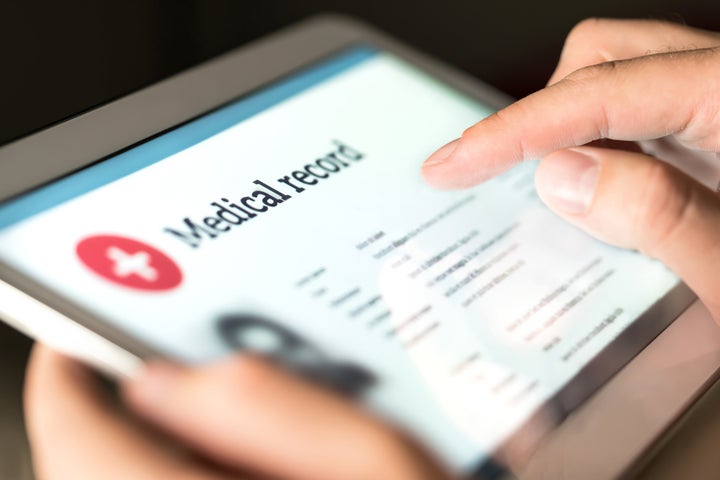These days, there’s an abundance of medical information on the internet, through message boards, symptom trackers and hospital websites. There are DNA testing kits that can reveal potential genetic health risks. You can even order lab tests without a doctor’s oversight. And medical testing with a doctor’s oversight ― whether it’s an X-ray, blood test, scan or something else ― is more advanced than ever.
Improvements in medicine and technology are vital. But there can also be a downside. With more information available about our health, is there a point where it becomes too much?
“This is a constant conundrum,” said Gordon Bernard, executive vice president for research and senior associate dean for clinical sciences at Nashville’s Vanderbilt University Medical Center. Doctors try to reveal medical information to patients in a way that minimizes harm and that ensures they understand what they’re hearing. Taking a test at home and sending it off for results can lead to undue concern, anxiety and confusion.
And it’s not just direct-to-consumer testing that can cause issues. There’s also a well-documented epidemic of overtesting and overtreatment in medicine.
“Whether medical testing is done at home or under the direction of a health provider, there are caveats that apply,” said Tomas H. Ayala, a cardiologist at The Heart Center at Mercy Medical Center in Baltimore. “Will the result provide an answer to a relevant question? Will the result affect treatment or clinical outcomes? And, perhaps most importantly, will the result be reliable? Without this information, test results are really little more than noise, rather than signal.”
Of course, testing is a valuable means for doctors to deduce what’s wrong in any patient. But medical professionals know it’s important to be selective about the tests you take, whether it’s in their office or at home.

What Tests Reveal And Don’t Reveal
“There is a saying in medicine that we should only order a test if the results of that test will change our course of treatment,” said Donald Ford, a family medicine physician at the Cleveland Clinic.
But making that judgment is not simple. For starters, medical tests are not always easy to interpret.
“Tests can show us unanticipated abnormalities that may be benign but need to be worked up with additional testing,” Ford said. “Many tests may show something abnormal, but that is not the source of the problem. An example would be spinal X-rays and MRIs that show arthritis or bone spurs. They might look significant, but they turn out not to be the source of pain.”
This becomes ever more true as we get older. Consider the challenge of diagnosing back pain in a patient over 50. “Spine imaging on anyone over 50 years of age is very likely to show something wrong, but doesn’t always bring us closer to understanding the source of pain or even what treatment would be best,” Ford said.
Now consider getting lab tests run on your own, which you can do thanks to companies like InsideTracker and Quest Diagnostics. Without the in-person advice of a trained medical professional, you’re the one trying to read and interpret the results in a meaningful way.
“We have to ask, is the test really measuring what we want to know?” Ayala said.
Let’s say a person has recurrent stomach problems and is concerned about food sensitivities. They order a food sensitivity test that measures the body’s immunoglobulin G (IgG) levels in response to certain molecules present in food.
“The underlying assumption of the test is that, if a food elicits an immune response in the form of IgG production, this indicates food sensitivity,” Ayala said. “In fact, the presence of IgG most often simply means that you’ve had a recent exposure to a specific food component. This test then would not answer if the patient truly has a specific food sensitivity ― but they may choose to needlessly limit their diet based on this test.”
“We worry a lot about false positives.”
– Dr. Gordon Bernard of Vanderbilt University Medical Center
There’s a risk of false positives on any medical test, whether taken at home or under a doctor’s direction, Bernard said.
“We worry a lot about false positives,” he said. “Let’s say you get a routine chest X-ray every year. Sometimes, things look funny. So you chase it down and 99% of the time, it’s not cancer; 1% percent of the time, it is.” But even when it’s the 99% situation, investigating that false positive “may involve invasive procedures that carry their own risks,” Bernard said.
“Tests have to be calibrated,” he said. “I’ve heard a number thrown around that somewhere in the neighborhood of 5% to 10% of test results will be abnormal but incorrect. If you retest, it’ll be normal.”
Because of this, he said, doctors are taught that if it’s a borderline abnormal result from many tests, you shouldn’t render a diagnosis until you retest the patient.

Ayala said that often at-home tests can give you “positive” diagnoses that would not change the course of treatment or be clinically significant for all patients.
Conversely, there is the problem of false negatives. Patients often want tests to confirm that they’re OK. And without the necessary medical knowledge, they might not recognize when a “good” result needs to be rechecked or when it doesn’t provide the full picture.
Two Heads Are Better Than One
Gathering medical data is always tricky, but it’s especially so if patients are doing so on their own.
“Most often, the results of these tests have to be confirmed,” Ford said, speaking of medical tests done without a doctor’s order or evaluation. “In my experience, the results are often either incorrect or clinically insignificant. Peace of mind is important, but it’s important to have a conversation with your doctor who can accurately describe what a given test result means.”
All of that isn’t to say that you shouldn’t research symptoms you’re experiencing or their potential treatments. It’s just better to do it with a doctor’s guidance.
“There is nothing more valuable to a physician than an educated patient,” Ford said. “I truly value educated patients when we are talking about managing a disease, where there are different options for treatment. The right way forward isn’t always the same for every patient, and someone who understands the risks and benefits of their medical options will generally do better than someone who doesn’t.”
Don’t just rely on at-home tests or random information you find on Google. Ford said most large academic medical centers have easily accessible information on their websites that is “kept current and reviewed by experts.” Think the Mayo Clinic, the Cleveland Clinic, the University of Michigan and Harvard Health.
Not all sources are created equal. “Unfortunately, there is information widely available that is flat-out wrong,” said Ford. He noted, for example, that symptom checker sites, which aim to diagnose illnesses without doctor oversight, can easily “lead to incorrect assumptions.”
The results of a genetic profile from a company like 23andMe may not all be clinically significant, Bernard said.
Yet they also come with the potential for high anxiety. Take a genetic test and you may get some frightening results, like a potential susceptibility to Alzheimer’s or the presence of the BRCA gene mutation (which indicates a risk for breast cancer), without any immediate guidance.
And don’t forget growing concerns about how genetic data gathered by commercial companies is being used or protected.
Researchers have examined the distress caused by everything from genetic testing to breast cancer biopsying, and sometimes that anxiety is reason enough for psychological support and counseling.
“We used to think more [information] is better, but with lots of data to prove it, we are realizing more tests can cause more problems,” Bernard said. “There are often very few tests you actually need.”
Or as Ayala put it: “Just because we can test for something does not mean we should. Testing ‘just to know’ can be misleading and potentially dangerous.”
Credit: Source link